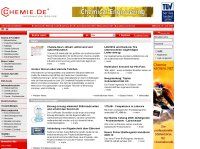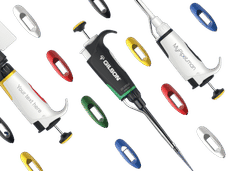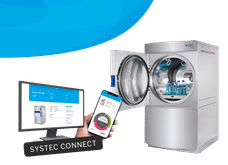Fresh breeze in German laboratories
Will air analyses soon only be conducted onsite?
Hamburg. Air analyses, to measure levels of pollution, are carried out daily, at many places in Germany and anywhere in the world - in accommodations, companies and in open air. How are theses analyses conducted today and how can the process be rendered more efficient and the results more precise? This was the issue which the Hamburg based SLS MICRO TECHNOLOGY wanted to see into with a survey carried out with 240 laboratories. Main focus was laid on how air analyses with external sample takings are currently being conducted. Clear result: today's methods are too unhandy, too inaccurate and too expensive.
This is at least how those, having to deal with sample takings and analyses on a daily basis, judge the current situation. There is much room for improvement. At the end of 2003, SLS MICRO TECHNOLOGY, pioneer in micro systems technology, interrogated 240 independent, certified analytical laboratories in Germany within the framework of a representative survey for weaknesses and chances of improvement regarding the gas chromatography technology in place at present.
Too unhandy, too slow, too expensive - much room for improvement
Main criticism was addressed by the laboratories, of which some even conduct as many as 80 GC-measurements per day, with 52 percent to the lack in portability and the complex handling of the devices. Moreover, long set-up and analysis periods are being considered as disturbing by more than one third of the interviewees. After all, almost 10 percent regard high acquisition costs and sensitivity of the devices as a serious problem. The fact, that with external air analyses, the methods and results are very likely to be faulty because parts of the substances to be measured are being lost during transport and desorption in laboratory, can also not be denied.
More mobility and promptness, fewer costs - the laboratories' wish list
Counter questioned which characteristics an ideal gas chromatograph should exhibit, a clear 86 percent of the respondents would like to have a device no more the size than that of a shoe carton. More than two thirds of the participants in the survey expected a measurement cycle of two minutes at the maximum, ideally less than that. Understandable also that, in view of the high error risk with the current sample takings and transports to the laboratories, 65 percent of the laboratories wish for a direct, onsite analysis. After all, 30 percent of all laboratories having participated in the survey conduct air analyses with external sample takings several times a week.
According to the interviewees, presently 60 percent of all costs in external air analyses are being caused by operating processes in the laboratories (sample desorption, conduction of analysis with laboratory-GC as well as result evaluation) and overall material and operating costs. By the use of a portable GC and the onsite analysis of the samples, most laboratories agree that costs could almost be halved. Even allowing for the ongoing operational costs of a portable gas chromatograph the bottom-line would still bring savings of over 25 percent.
The result: mobile devices for onsite air analyses could definitely improve the quality of results and cost effectiveness of laboratories. Most laboratories are not satisfied with the current methods and devices in place for external air analyses. There is urgent need for improvement, above all with regards to the mobility, handling, reaction times and cost effectiveness.
Against the background of this survey, the SLS MICRO TECHNOLOGY can deliver a proof that the results do not have to be mere wishful thinking. At this year's laboratory trade fair in Munich, the German pioneering company in micro systems technology is going to exhibit its flag ship product, the world's first, extremely miniaturized gas chromatograph - the GCM 5000. Merely at footprint format of a credit card, the GCM 5000 offers the full functionality and the same physical concept of traditional GCs (injector, separation column, detector). Thanks to this extreme miniaturization, the laboratories' demands for mobility and cost effectiveness can for the first time be met.
Other news from the department business & finance
These products might interest you
Most read news
More news from our other portals
See the theme worlds for related content
Topic world Gas chromatography
Gas chromatography is an essential method in analytical chemistry for the separation and analysis of volatile compounds. Due to its high resolution and sensitivity, it has become firmly established in areas such as environmental analysis, food chemistry or forensic science. GC provides precise and reliable results and enables deep insights into the chemical composition of samples.

Topic world Gas chromatography
Gas chromatography is an essential method in analytical chemistry for the separation and analysis of volatile compounds. Due to its high resolution and sensitivity, it has become firmly established in areas such as environmental analysis, food chemistry or forensic science. GC provides precise and reliable results and enables deep insights into the chemical composition of samples.





























































